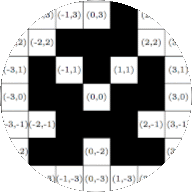\(2\text{,}\) \(3\text{,}\) \(5\text{,}\) \(7\text{,}\) \(11\text{,}\) \(13\text{,}\) \(17\text{,}\) \(19\text{,}\) \(23\text{,}\) \(29\text{,}\) \(31\text{,}\) \(37\text{,}\) \(41\text{,}\) \(43\text{,}\) \(47\text{,}\) \(53\text{,}\) \(59\text{,}\) \(61\text{,}\) \(67\text{,}\) \(71\text{,}\) \(73\text{,}\) \(79\text{,}\) \(83\text{,}\) \(89\text{,}\) \(97\text{,}\) \(101\text{,}\) \(103\text{,}\) \(107\text{,}\) \(109\text{,}\) \(113\text{,}\) \(127\text{,}\) \(131\text{,}\) \(137\text{,}\) \(139\text{,}\) \(149\text{,}\) \(151\text{,}\) \(157\text{,}\) \(163\text{,}\) \(167\text{,}\) \(173\text{,}\) \(179\text{,}\) \(181\text{,}\) \(191\text{,}\) \(193\text{,}\) \(197\text{,}\) \(199\text{,}\) \(211\text{,}\) \(223\text{,}\) \(227\text{,}\) \(229\text{,}\) \(233\text{,}\) \(239\text{,}\) \(241\text{,}\) \(251\text{,}\) \(257\text{,}\) \(263\text{,}\) \(269\text{,}\) \(271\text{,}\) \(277\text{,}\) \(281\text{,}\) \(283\text{,}\) \(293\text{,}\) \(307\text{,}\) \(311\text{,}\) \(313\text{,}\) \(317\text{,}\) \(331\text{,}\) \(337\text{,}\) \(347\text{,}\) \(349\text{,}\) \(353\text{,}\) \(359\text{,}\) \(367\text{,}\) \(373\text{,}\) \(379\text{,}\) \(383\text{,}\) \(389\text{,}\) \(397\text{,}\) \(401\text{,}\) \(409\text{,}\) \(419\text{,}\) \(421\text{,}\) \(431\text{,}\) \(433\text{,}\) \(439\text{,}\) \(443\text{,}\) \(449\text{,}\) \(457\text{,}\) \(461\text{,}\) \(463\text{,}\) \(467\text{,}\) \(479\text{,}\) \(487\text{,}\) \(491\text{,}\) \(499\text{,}\) \(503\text{,}\) \(509\text{,}\) \(521\text{,}\) \(523\text{,}\) \(541\text{,}\) \(547\text{,}\) \(557\text{,}\) \(563\text{,}\) \(569\text{,}\) \(571\text{,}\) \(577\text{,}\) \(587\text{,}\) \(593\text{,}\) \(599\text{,}\) \(601\text{,}\) \(607\text{,}\) \(613\text{,}\) \(617\text{,}\) \(619\text{,}\) \(631\text{,}\) \(641\text{,}\) \(643\text{,}\) \(647\text{,}\) \(653\text{,}\) \(659\text{,}\) \(661\text{,}\) \(673\text{,}\) \(677\text{,}\) \(683\text{,}\) \(691\text{,}\) \(701\text{,}\) \(709\text{,}\) \(719\text{,}\) \(727\text{,}\) \(733\text{,}\) \(739\text{,}\) \(743\text{,}\) \(751\text{,}\) \(757\text{,}\) \(761\text{,}\) \(769\text{,}\) \(773\text{,}\) \(787\text{,}\) \(797\text{,}\) \(809\text{,}\) \(811\text{,}\) \(821\text{,}\) \(823\text{,}\) \(827\text{,}\) \(829\text{,}\) \(839\text{,}\) \(853\text{,}\) \(857\text{,}\) \(859\text{,}\) \(863\text{,}\) \(877\text{,}\) \(881\text{,}\) \(883\text{,}\) \(887\text{,}\) \(907\text{,}\) \(911\text{,}\) \(919\text{,}\) \(929\text{,}\) \(937\text{,}\) \(941\text{,}\) \(947\text{,}\) \(953\text{,}\) \(967\text{,}\) \(971\text{,}\) \(977\text{,}\) \(983\text{,}\) \(991\text{,}\) \(997\text{,}\) \(1009\text{,}\) \(1013\text{,}\) \(1019\text{,}\) \(1021\text{,}\) \(1031\text{,}\) \(1033\text{,}\) \(1039\text{,}\) \(1049\text{,}\) \(1051\text{,}\) \(1061\text{,}\) \(1063\text{,}\) \(1069\text{,}\) \(1087\text{,}\) \(1091\text{,}\) \(1093\text{,}\) \(1097\text{,}\) \(1103\text{,}\) \(1109\text{,}\) \(1117\text{,}\) \(1123\text{,}\) \(1129\text{,}\) \(1151\text{,}\) \(1153\text{,}\) \(1163\text{,}\) \(1171\text{,}\) \(1181\text{,}\) \(1187\text{,}\) \(1193\text{,}\) \(1201\text{,}\) \(1213\text{,}\) \(1217\text{,}\) \(1223\text{,}\) \(1229\text{,}\) \(1231\text{,}\) \(1237\text{,}\) \(1249\text{,}\) \(1259\text{,}\) \(1277\text{,}\) \(1279\text{,}\) \(1283\text{,}\) \(1289\text{,}\) \(1291\text{,}\) \(1297\text{,}\) \(1301\text{,}\) \(1303\text{,}\) \(1307\text{,}\) \(1319\text{,}\) \(1321\text{,}\) \(1327\text{,}\) \(1361\text{,}\) \(1367\text{,}\) \(1373\text{,}\) \(1381\text{,}\) \(1399\text{,}\) \(1409\text{,}\) \(1423\text{,}\) \(1427\text{,}\) \(1429\text{,}\) \(1433\text{,}\) \(1439\text{,}\) \(1447\text{,}\) \(1451\text{,}\) \(1453\text{,}\) \(1459\text{,}\) \(1471\text{,}\) \(1481\text{,}\) \(1483\text{,}\) \(1487\text{,}\) \(1489\text{,}\) \(1493\text{,}\) \(1499\text{,}\) \(1511\text{,}\) \(1523\text{,}\) \(1531\text{,}\) \(1543\text{,}\) \(1549\text{,}\) \(1553\text{,}\) \(1559\text{,}\) \(1567\text{,}\) \(1571\text{,}\) \(1579\text{,}\) \(1583\text{,}\) \(1597\text{,}\) \(1601\text{,}\) \(1607\text{,}\) \(1609\text{,}\) \(1613\text{,}\) \(1619\text{,}\) \(1621\text{,}\) \(1627\text{,}\) \(1637\text{,}\) \(1657\text{,}\) \(1759\text{,}\) \(1777\text{,}\) \(1783\text{,}\) \(1787\text{,}\) \(1789\text{,}\) \(1801\text{,}\) \(1811\text{,}\) \(1823\text{,}\) \(1831\text{,}\) \(1847\text{,}\) \(1861\text{,}\) \(1867\text{,}\) \(1871\text{,}\) \(1873\text{,}\) \(1877\text{,}\) \(1879\text{,}\) \(1889\text{,}\) \(1901\text{,}\) \(1907\text{,}\) \(1913\text{,}\) \(1931\text{,}\) \(1933\text{,}\) \(1949\text{,}\) \(1951\text{,}\) \(1973\text{,}\) \(1979\text{,}\) \(1987\text{,}\) \(1993\text{,}\) \(1997\text{,}\) \(1999\)

